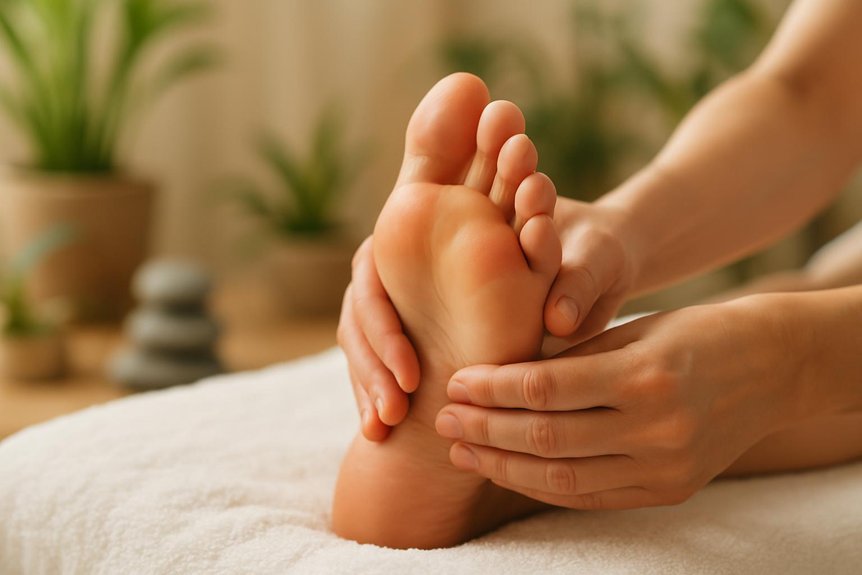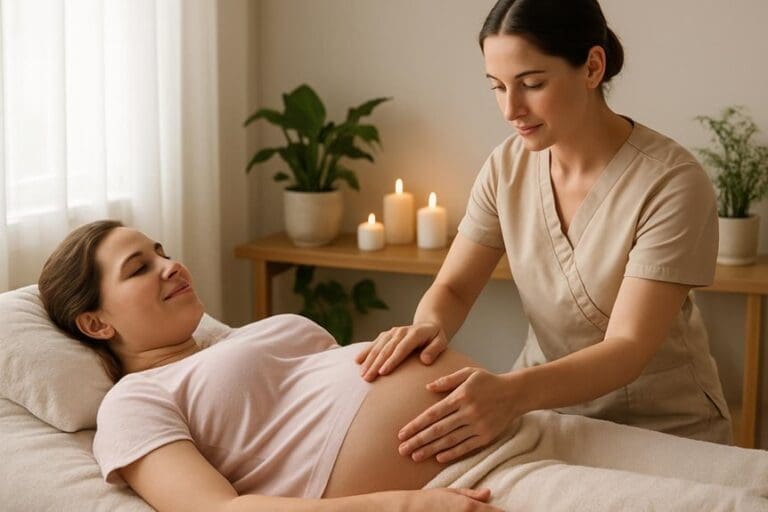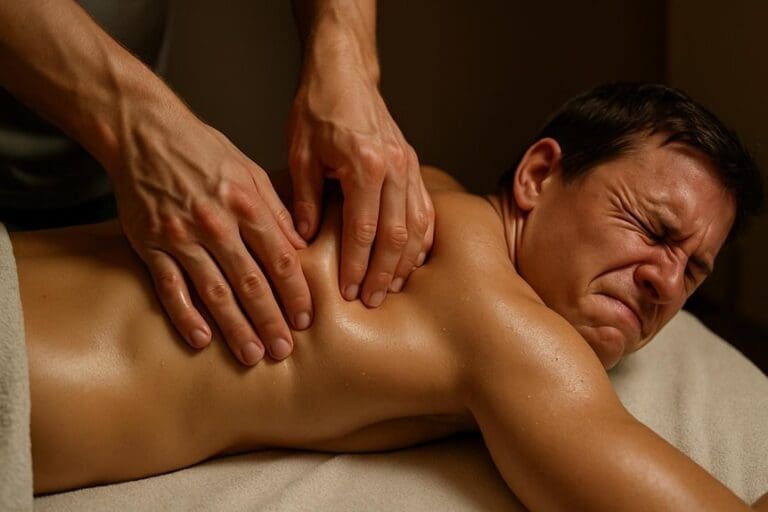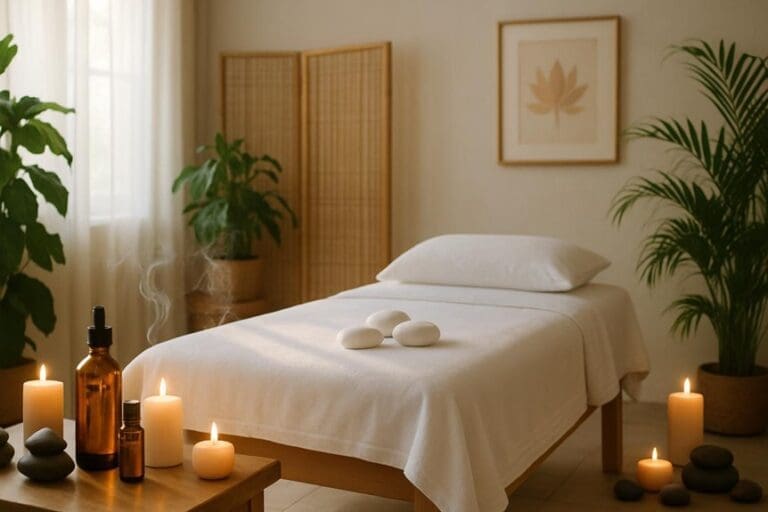It cannot cure gout, which stems from hyperuricaemia and NLRP3-driven IL‑1β inflammation, but it may support symptom control. Gentle, structured pressure on plantar and peri‑malleolar reflex zones can modulate nociception via spinal gating, reduce sympathetic tone, and enhance microvascular and lymphatic flow, easing pain and edema. During flares, therapists avoid inflamed joints and use proximal techniques alongside medical care. It is adjunctive to urate-lowering and anti‑inflammatory therapy. Proper selection, technique, and timing are key—more insights follow.
What Is Gout and How Does It Affect the Body
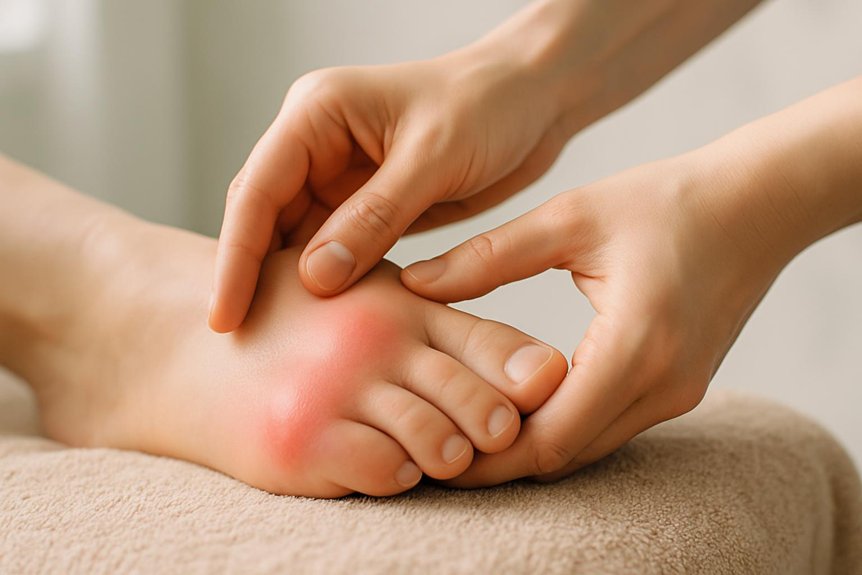
Gout is an inflammatory arthritis caused by hyperuricaemia, where sustained elevation of serum urate leads to monosodium urate crystal deposition in and around joints and soft tissues. Crystals trigger NLRP3 inflammasome activation within innate immune cells, amplifying IL-1β–mediated inflammation.
Clinically, this presents as abrupt, exquisite pain, erythema, warmth, and swelling—often at the first metatarsophalangeal joint, ankles, or knees. Without control, crystal burden accumulates, forming tophi that erode cartilage and bone, narrowing joint space and limiting motion.
Systemic effects may include low-grade inflammation, sleep disturbance, and functional decline.
At Spa & Massage clinics in London, therapists recognise these mechanisms when tailoring gentle, non-provocative bodywork around flares. They prioritise comfort, positioning to reduce pressure on sensitive joints, and soothing techniques that respect tissue irritability while supporting relaxation and restorative rest. Reflexology, which focuses on the healing power of specific foot zones, may be considered to further enhance relaxation and support the body’s recovery during periods between gout flares.
The Principles of This Massage Therapy and How It May Support Gout Care
Building on the inflammatory cascade described above, it is applied as a structured pressure protocol to plantar, dorsal, and peri-malleolar reflex zones mapped to musculoskeletal, renal, hepatic, and autonomic pathways. The working model is neuromodulation: graded pressure stimulates cutaneous–mechanoreceptor networks, influences spinal segmental gating, and may downshift sympathetic tone.
In gout care, this framework targets nociceptive amplification, microvascular congestion, and tissue edema around first MTP and midfoot joints while acknowledging urate biology remains upstream.
Spa & Massage therapists employ consistent, low-to-moderate pressures, paced breathing, and brief holds over renal–hepatic reflex maps to support fluid handling and autonomic balance. Techniques are adapted to flare status, avoiding inflamed tissue, with emphasis on gentle sequencing, venous-lymphatic return, and comfort-focused dosing that respects medical treatment plans.
Potential Benefits of Zone Therapy for Gout Symptoms
Often overlooked in gout care, it may offer adjunctive symptom relief by modulating nociception, autonomic balance, and local fluid dynamics.
Evidence suggests targeted foot pressure can downregulate peripheral sensitisation, dampen sympathetic tone, and enhance microcirculatory clearance—mechanisms relevant to monosodium urate crystal–driven inflammation.
Clients often report reduced throbbing, less guarding, and improved sleep following sessions.
From Spa & Massage’s perspective, it is framed as supportive, not disease-modifying.
It may ease periarticular oedema through gentle lymphatic facilitation, reduce muscle co-contraction around an irritable joint, and lower stress-related cortisol elevations that can amplify pain perception.
In stable phases, it can complement pharmacotherapy by improving comfort and gait confidence.
During flares, careful, non-provocative work away from the most inflamed zone may still provide systemic calming without aggravating the joint.
How Our Therapists Tailor Foot Pressure Therapy for Acute and Chronic Gout
At Spa & Massage, therapists modulate sessions according to disease phase—during acute flares they avoid the inflamed joint, use minimal pressure proximally to reduce nociceptive input, and prioritise lymphatic-style strokes to limit edema.
Point selection targets reflex areas corresponding to kidneys, gastrointestinal tract, and microcirculation to support urate handling and autonomic downregulation, while steering clear of regions that exacerbate local crystal-induced synovitis.
Between flares, clients receive graded pressure protocols and a structured self-care plan (hydration, gentle foot mobility, pacing, and home reflex zones) to improve perfusion, mitigate triggers, and support long-term symptom control alongside medical management.
Adapting to Flare-Ups
While acute gout involves intense synovitis from monosodium urate crystal deposition, chronic disease reflects persistent low-grade inflammation with tophus formation and joint remodeling; this therapy at Spa & Massage is adjusted accordingly to protect tissues and modulate nociception.
During flares, therapists avoid direct stress on inflamed joints, prioritising distal foot zones with gentle, rhythmic input to engage descending inhibitory pathways and reduce sympathetic arousal. Contact is brief, pressure titrated to pain-free thresholds, and sessions shortened to limit neurogenic inflammation.
Between flares, techniques progress gradually to support mobility and reduce hyperalgesia without provoking microtrauma.
Safety anchors every decision: therapists screen for fever, erythema, and allodynia; defer if infection is suspected; and coordinate timing around medical therapy.
Aftercare emphasises hydration, elevation, and calm breathing to stabilise pain circuits.
Pressure and Point Selection
Because nociceptor sensitisation and joint capsule distension differ between acute flares and intercritical phases, Spa & Massage therapists calibrate its pressure and point selection to disease stage and tissue irritability.
In acute gout, they avoid direct load over the inflamed first metatarsophalangeal joint, using feather‑light, slow pacing on proximal foot and ankle zones to down‑modulate afferent input. Gentle holds along the medial arch (spine/parasympathetic zones) and distal calf lymphatic drainage aim to ease neurogenic inflammation without provoking C‑fiber wind‑up.
Between flares, with pain thresholds higher, firmer but still measured pressure targets renal, liver, and digestive reflex areas to support urate handling, alongside ankle/heel zones influencing local circulation.
Therapists at Spa & Massage continuously reassess tenderness, edema, warmth, and client breath to titrate intensity moment‑to‑moment.
Ongoing Self-Care Plans
Building on calibrated pressure and point selection, Spa & Massage integrates this massage into an ongoing self-care plan that differs for acute flares versus intercritical periods. During flares, therapists avoid inflamed joints and apply brief, low-load sessions focusing on autonomic downregulation: gentle work to the adrenal, kidney, and lymphatic reflex zones to modulate nociception, ease vasodilation, and support fluid clearance.
They pair this with elevation guidance, cold-pack timing, and analgesic-safe scheduling.
Between attacks, the emphasis shifts to urate-risk reduction: progressive pressure to renal, hepatic, and digestive reflex zones to support diuresis patterns, sleep regularity, and weight-stabilising routines. Sessions are paced weekly to biweekly, with home foot-care, hydration targets, and alcohol/purine timing advice.
Therapists document symptom trajectories, titrating intensity to joint status and comorbidities.
What to Expect in during a Massage Session at Spa & Massage
At Spa & Massage, each massage session for gout begins with a focused consultation to document flare status, urate-lowering therapy, cardiovascular risk, and neuropathy screening, ensuring contraindications (e.g., acute joint inflammation or infection) are identified.
The session proceeds with graded pressure mapping of foot reflex zones linked to nociceptive pathways, microcirculatory regulation, and autonomic balance, avoiding direct stress on inflamed joints and adjusting technique to pain thresholds.
Aftercare includes hydration, gentle ankle–calf mobility to aid venous-lymphatic return, flare monitoring, and guidance on red flags that warrant medical review.
Initial Consultation Process
How does this appointment begin at Spa & Massage? It starts with a concise, clinically oriented consultation. Therapists verify gout history, flare frequency, urate-lowering medications, comorbidities (CKD, hypertension, diabetes), anticoagulant use, and recent infections or wounds.
They ask about current pain loci—first MTP, midfoot, ankle—and stage (intercritical vs. acute flare), because inflamed joints and tophi guide contraindications and pressure dosing.
They observe foot temperature, erythema, edema, and protective gait, noting neuropathy risk or skin integrity issues. Hydration status and dietary triggers (alcohol, purine load) are reviewed as context for urate dynamics, not as treatment claims.
Goals are defined: symptom modulation, sleep quality, stress reduction. A tailored plan specifies contact areas, graded pressure, and positions that minimize joint load while respecting flare physiology and comfort.
Session Flow and Aftercare
While acute synovitis is excluded or accommodated with modified pressure, the massage session proceeds in a structured sequence that prioritises joint protection and autonomic down‑regulation.
At Spa & Massage, therapists stabilise the ankle, warm tissues, then apply graded, non‑nociceptive input to plantar and dorsal reflex zones linked to renal clearance, hepatic metabolism, and neuroendocrine stress pathways. Techniques remain distal to inflamed joints, avoiding shear over tophi. The aim is reduced sympathetic drive, improved microcirculation, and gentle lymphatic return—conditions that may ease periarticular tension without provoking flares.
Aftercare is deliberate: hydration to support urate excretion, avoidance of alcohol that evening, and light ambulation to maintain venous return. Therapists advise heat or cool packs per sensitivity, note any delayed tenderness, and schedule intervals that respect flare periodicity.
Safety, Contraindications, and When to Seek Medical Advice
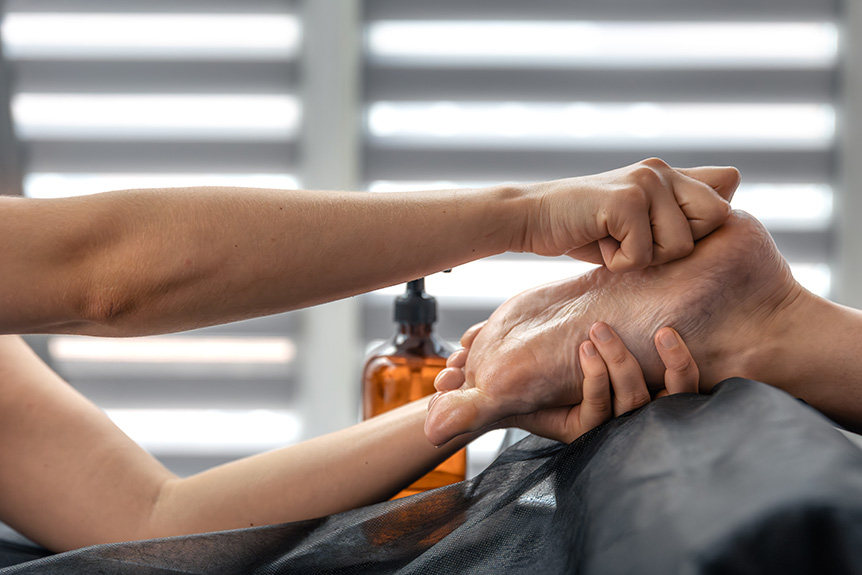
Because gout involves acute synovial inflammation driven by monosodium urate crystal deposition, it should be applied with caution and adapted to disease stage.
During an acute flare—erythema, heat, throbbing pain—direct foot pressure over the first metatarsophalangeal joint or inflamed regions risks amplifying nociception and tissue stress; gentle proximal techniques or deferral are safer.
Contraindications include suspected infection, ulceration, severe peripheral neuropathy, acute deep vein thrombosis, uncontrolled heart failure, and poorly controlled diabetes.
Medical advice is warranted for a first-ever flare, escalating frequency, fever, sudden swelling unresponsive to rest, or adverse reactions during a session (numbness, pallor, dizziness).
At Spa & Massage, therapists screen for red flags, coordinate session intensity with disease activity, and encourage medical review for urate-lowering therapy and flare optimization.
Conclusion
In sum, this therapy sits beside medical care like a tuning fork to an orchestra—non-curative yet harmonising. By modulating autonomic tone, easing nociceptive tension, and supporting distal microcirculation, it may soften the edges of monosodium urate–driven inflammation and improve perceived pain and mobility. Skilled therapists adapt pressure away from acutely inflamed joints, prioritising safety and contraindications. For those steering through flares and intercritical periods, it offers a measured adjunct—gentle, targeted, and grounded in physiology—while medical evaluation remains the North Star.
